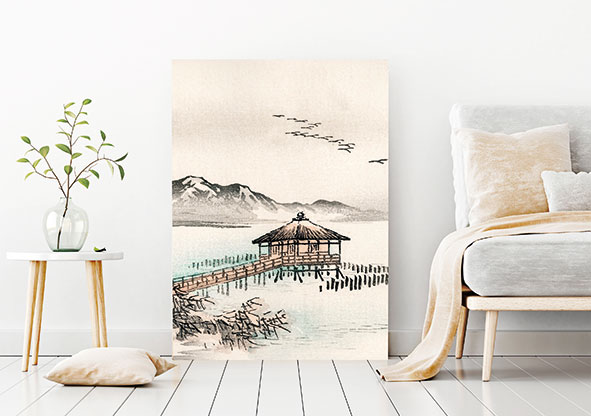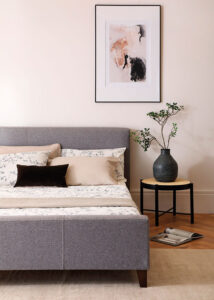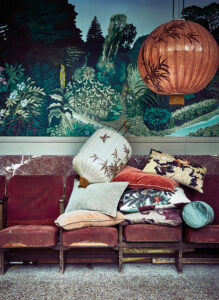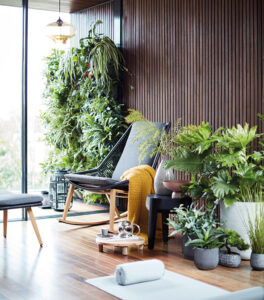J A P A N D I
Posted 22nd August 2021
On the face of it, Japan and Scandinavia may not seem to have a lot in common but in terms of design there’s a lovely crossover which when combined together, creates ‘Japandi’. Each one’s design aesthetics are based on simple, unfussy, natural elements and comfort. The modern but rustic characteristics of Scandinavian design pair beautifully with the traditional elegance of Japanese interiors. The resulting style creates zen-like, serene spaces in which to retreat from life’s stresses.
The fusion of these two styles brings out the best of them both. Where Japanese styling might be considered too sleek and uniform, the textures added by the Scandinavian influence offer variance. In Scandinavian interiors, the neutral colour palette can be offset by the darker, richer colours of Japanese design, giving Japandi-styled rooms depth and character.

Hygge elements of Scandinavian style combine a warm, comforting atmosphere with the Japanese ‘wabi-sabi’ ideal of finding beauty in the imperfect. It’s the ultimate design combination.
Japandi interiors are all about function. They tend to be more minimal, with every item well considered and with a purpose. Clutter is a no-no and purely decorative items have to take a backseat. The focus is on clean lines and open spaces, so if you have a busy household, you’ll need to make sure you’ve got lots of big baskets, handy shelving and cupboards to store paraphernalia away. Consider it 21st Century faux-minimalism!
Natural elements are another key element of Japandi interiors. Think big windows, unpainted wood finishes, natural materials such as linen, wool and cotton, and greenery in the form of indoor plants. Why not combine a wooden dining table with a linen tablecloth or an Eames beechwood chair with a statement plant? As wood is a key feature of Japandi style and wood naturally varies in its tone, don’t feel restricted to one type of stain or varnish; in fact mixing the different colours will bring depth and interest to each room without being overly colourful.

Paint colours tend to be kept earthy with variations of white, cream, beige, grey and taupe all being suitable. Starting with a warm, neutral palette will help keep the spaces feeling calm and restful. Black accents can then offer a stronger contrast without dominating.
If you prefer modern furniture then search out items that have clean lines and are low in height – in particular in the bedroom – as a low bed will help the feeling of openness and space. Layering the bed with a couple of thin throws will add some Hygge comfort.
When it comes to accessories, you don’t have to discard all your much-loved trinkets. The wabi-sabi philosophy encourages us to take pleasure in the things we already own, especially if they are a little tired or imperfect. Try to avoid a tendency to clutter a shelf, instead collating items in groups of three. A book, vase and small plant make an ideal arrangement, even on a narrow surface.

In kitchens and bathrooms opt for dark wood cabinetry and light worktops. Remember to include the odd plant or two as it will help freshen the room. Muted colours will look softer and more organic.
A freestanding bath that is curved in design or a floating vanity, will also help the feeling of light and space. Keep accessories to a minimum, and carefully and imaginatively position those you do have. A smartly tiled, recessed niche or functional wooden caddy are ideal for this purpose.
Japandi design is focused on longevity, craftmanship and is the antithesis of our modern day, throw away culture. If you are buying new pieces to create this Japandi style then make sure they’re built to last and try to choose those that are sustainable and produced by considerate and ethical manufacturers. Although neither Japanese or Scandinavian design are new concepts and even though the emergence of Japandi style is still in its infancy, the key concept of open spaces, simple detail, functional design, natural materials and fewer accessories, perfectly embodies the “less is more” lifestyle that we are all being encouraged to embrace. This should ensure the longevity of this beautiful aesthetic for many years to come.
 Rosie Kinsella
Rosie Kinsella
Interior Designer
01604 751262
